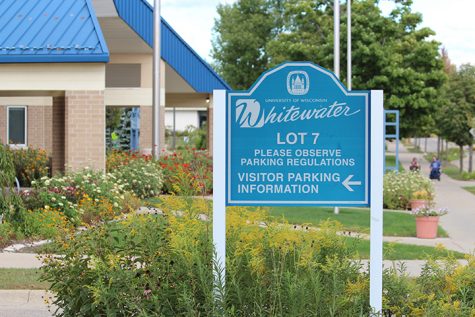New Campus dorm project approved
October 7, 2016
Construction of a new residential hall at UW-Whitewater will begin after 3 years of delays with hopes of opening by Fall 2019.
Although the building is still in the early design phase, The Director of University Housing Frank Bartlett said the University has all the authority it needs from the state to begin the project.
“At this point, we’re a go” Bartlett said.
The project was approved by the UW System Board of Regents in 2012, and was included in the 2013-15 biennial budget. Governor Walker signed off on the request on August 18.
The initial cost was projected to be $28 million, but the estimated cost is $34 million now.
The program revenue bonds used to finance the project will be issued by school, but authority for the project must still be granted by the state.
“It’s been kind of a rocky process, trying to get going” Bartlett said.
At the August 16 Board of Regents meeting, the project was mentioned as an example of the need for more autonomy in the UW System. UW-W Chancellor Beverly Kopper said that giving UW system universities more authority to handle projects that are funded by the schools would benefit long term planning.
“These types of flexibilities will benefit our schools and will benefit our communities” Kopper said.
The new housing facility will hold aroun 400 beds. By comparison the Wells residence halls, the largest by capacity on campus, hold 600 beds each.
With the project now starting, the university is working to have the residence hall open for students by Fall 2019.
Overflow
With more than 93 percent of incoming freshmen living in University Housing, enrollment goals at Whitewater have to be constrained by the housing capacity. The UW-W Housing Department holds regular meetings with enrollment management to set freshmen class targets.
“The campus desire to grow has to wait actually until the new hall comes online,” Bartlett said.
In recent years, some students have been placed in lounges, which are meant to be used for studying and social events. When the fall 2015 semester began, there were more than 100 students living in overflow lounges.
The 2016-17 academic year had fewer students living in lounges than the previous two years, and the Housing Department plans to have all students moved out of the lounges by Sept. 20.
The University also leases off campus apartments and works with the outside community to accommodate older students.
The timeline for University Housing growth has changed substantially since UW-Whitewater released its Master Plan for in 2011 that included 4 new residence halls. That plan also included replacing the two Wells Towers, which are more than 60 years old each.

photo by Kim Gilliland/ Photo Editor
With the building now scheduled to be open in Fall 2019, Whitewater plans to keep the number of incoming freshmen consistent at 2,150 through the 2018-19 school year.
UW-Whitewater recruits heavily from Illinois, as the cost of attending Whitewater for an out of state resident is less than that of an in state resident attending many public Illinois Universities.
At the Aug. 18 Board of Regents meeting, Regent Margaret Farrow expressed concern that students from Illinois may not have attended Whitewater this year because of the housing shortage.
“God help us. They might have gone to Illinois,” Farrow said.
Although other universities in the UW-System are facing more serious problems with housing overflow, the delay in starting the building project has put pressure on University Housing to support enrollment.
Section 3, Building Plans
Meeting the Fall 2019 deadline will be a challenge according to the architects involved in the design phase.
Senior Architect and Planning Liaison for the UW-System Maura Donnelly stressed the need for quick decision making in the planning process in order to meet the expected deadline.
“Even if it means taking less time to look at every option, if we want to meet that timeframe that may be what it takes,” Donnelly said.
Jonathan Parker, the Client Executive for Eppstein Uhen Architects, said the 2019 deadline is shorter than the average time frame for a project of this size and will require an efficient design phase.
“We need to be pretty concentrated and quick on decision making,” Parker said.
Timeliness was the main concern of the committee members, as other departments in the university are making plans based on the 2019 completion.
“At this point, enrollment is already making plans based on that 2019 date,” Bartlett said.
Faculty members also want the new dorm to be a recruitment tool.
“We are looking for another attractive feature for the campus,” Bartlett said, “We have a good brand going here at UW Whitewater.”
Parker, who also designed the Eagle Hall at UW-Lacrosse, plans to use other Residence Halls as examples in the design process.
Faculty also noted the importance of longevity. The building, like Wells and Fischer Halls, will likely be in use for decades to come.
“It’s important that when the new wears off, it’s still somewhere the students really want to live,” Donnelly said.













